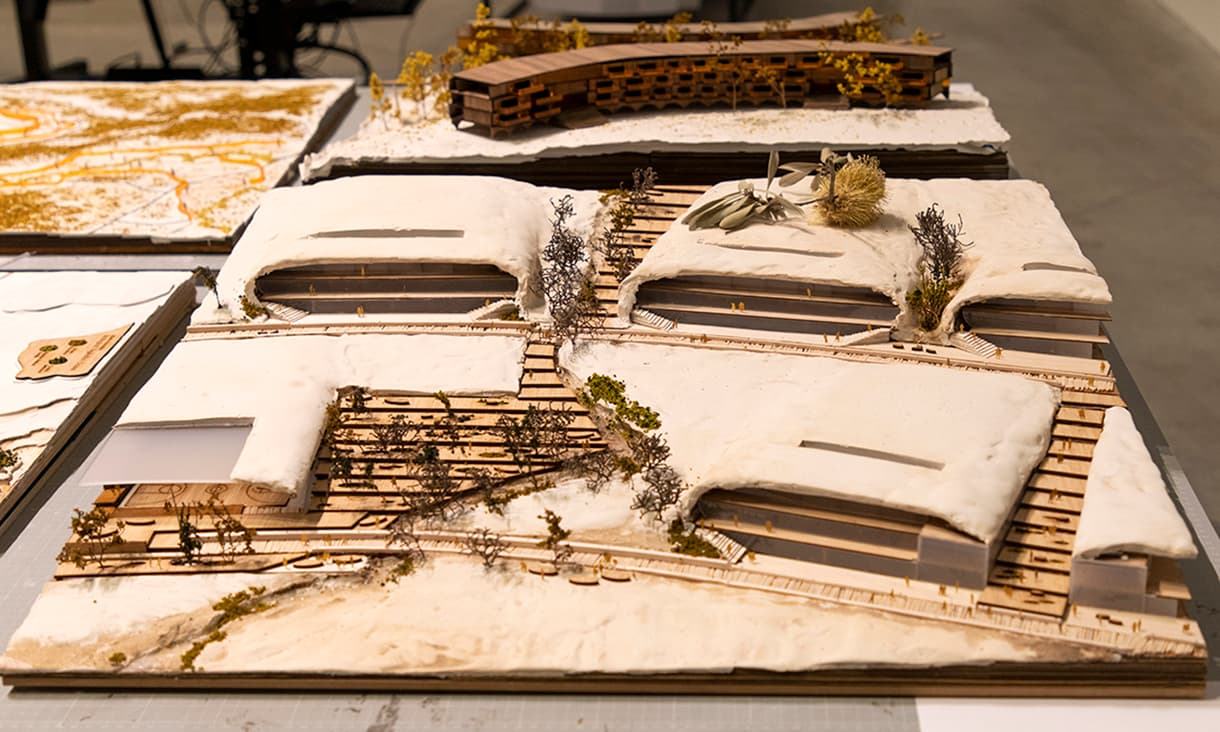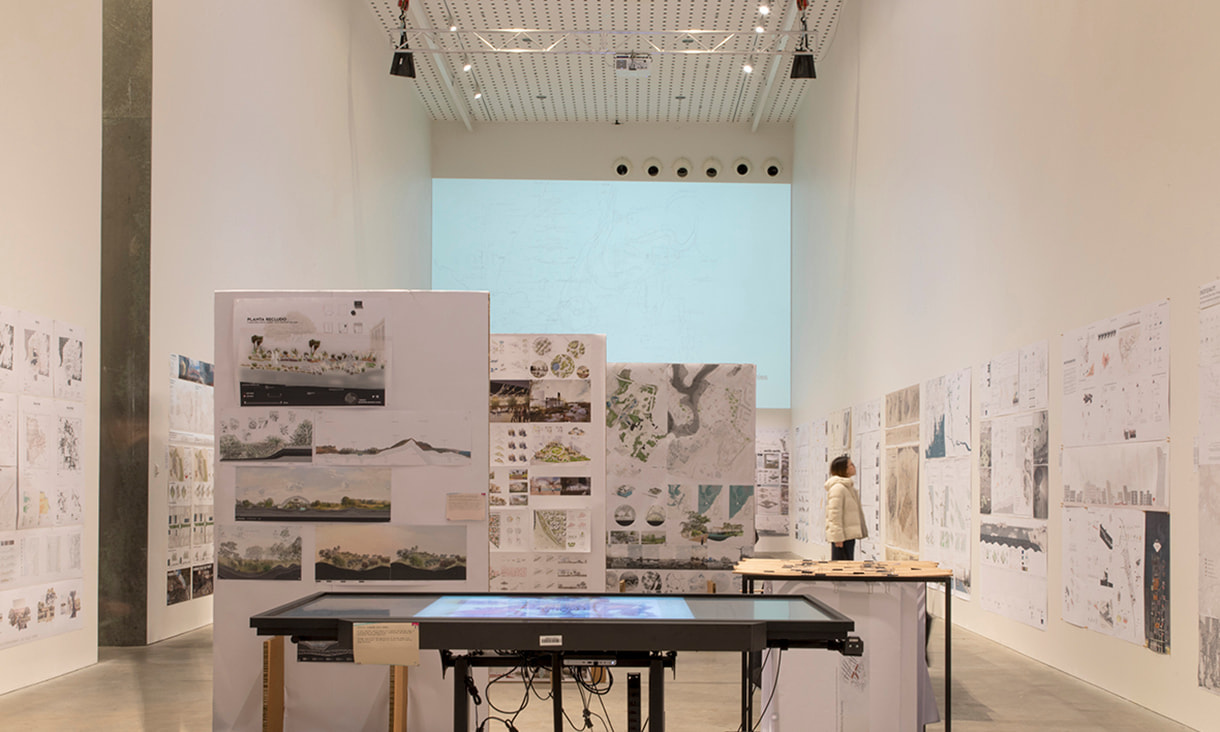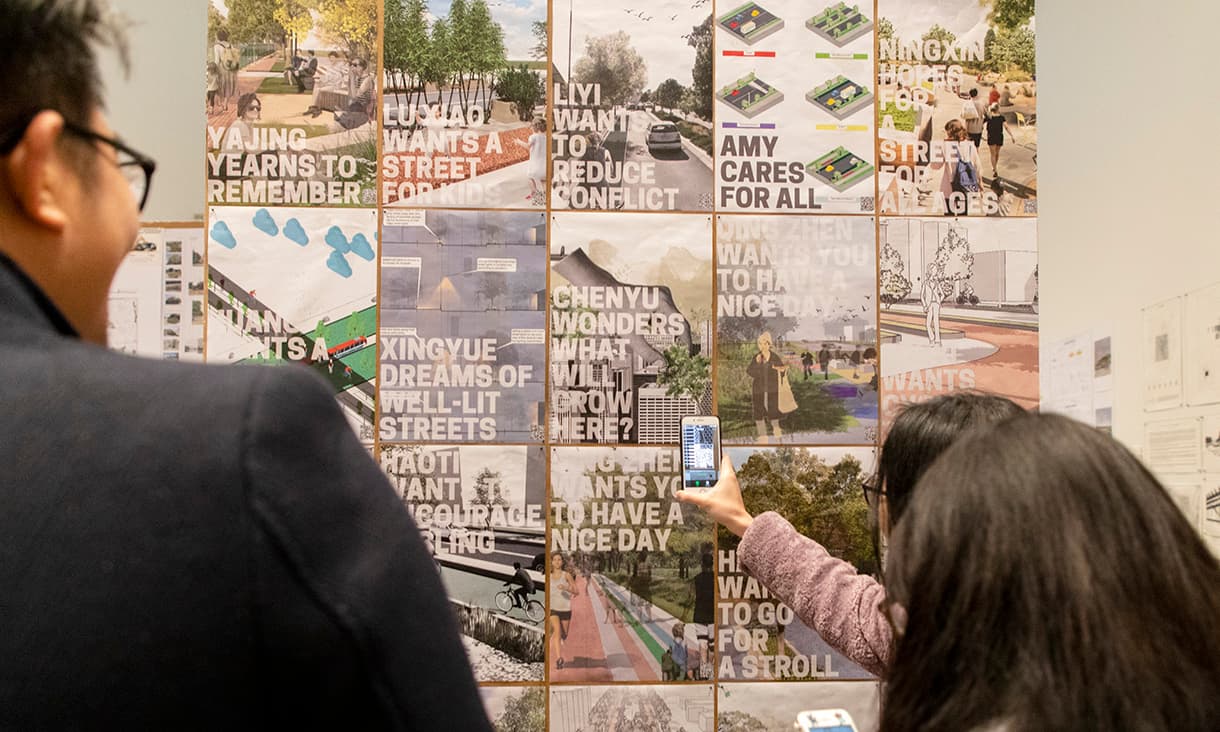The landscape architects of the future will create diverse and sustainable open spaces, in increasingly dense urban environments.

The environmental impact of dense urban development brings with it a need to reduce its footprint, by creating diverse outdoor environments and public open spaces. In addition to responding to the challenges of urbanisation, the necessary work of landscape architects is increasingly in focus, with climate change and the public health pandemic rapidly changing how we use public outdoor spaces.
Students frequently choose to study landscape architectural design because they have a strong commitment to both environmental wellbeing and social justice, says Katrina Simon, Associate Dean of Landscape Architecture.
“They care about the living world that we have inherited and want to make it better for all the living organisms and systems in it,” says Simon.
“Landscape architecture engages with a unique and very powerful combination of both the biophysical components, and the creative and experiential dimensions of the human world. It can be a great choice for people who love geography and art, for example.”
RMIT’s Bachelor of Landscape Architectural Design and the accredited Master of Landscape Architecture degrees are recognised as world-class programs fostering design knowledge, critical thinking, and design advocacy through innovative teaching and research.
Landscape architecture works with many of the things that people love the most: plants, gardens, parks, seasons, rivers, coastlines and communities, to address many of the things they fear the most: climate change, environmental degradation, loss of the natural world, disruption and uniform public spaces.
“Landscape architecture engages with a unique and very powerful combination of both the biophysical components, and the creative and experiential dimensions of the human world."
“Some of the most prominent changes facing the landscape architecture industry are the impacts of increasingly dense urban environments, where the role of green open spaces become even more important,” said Simon.
“Landscape architectural design is a combination of some of the most wonderful and diverse types of ‘ingredients’ and natural systems that have their own life, and social systems that we as humans continually make and modify.”
The sudden and severe impact of COVID-19 on the way we use and share our outdoor environments and public open spaces for relaxation and exercise, and how those spaces can accommodate large numbers of people and enable people to remain safely spaced, will change the ways those spaces are organised and designed.
“The design and management of public open spaces are going to be impacted for an unknown period of time. Landscape architecture practitioners are always conscious of time as an important design dimension and so the ability for designed spaces to be modified both temporarily and permanently, creates new opportunities for shaping the ways our public open spaces can continue to evolve,” said Simon.

The UN’s Sustainable Development Goals have been developed to clarify the types of change that will help lead to a more sustainable future. The RMIT Landscape Architecture programs work in concert with these goals, enabling students to address the global challenges we face, including those related to climate change, environmental degradation and social justice.
Students actively think about how landscape architecture contributes to achieving better spaces and community outcomes, with final year students in the Master of Landscape Architecture asked to frame their final design projects in relation to the UN Sustainable Development Goals.
Recent RMIT graduate Michelle Thomas Zacharias received the 2020 Hassell Travelling Scholarship, awarded to graduates with outstanding potential for future contributions to landscape architecture. Michelle’s project explored how landscape architectural principles and practices could improve the social conditions of people living in red light districts in New Delhi, India, and was developed through field work and collaboration with existing non-governmental organisations operating in that area.
The practice of landscape architecture in Australia is also coming to terms with its relationship to Aboriginal people.
“Our programs are pursuing meaningful and innovative relationships with Aboriginal organisations, enabling the profession to engage with principles of reconciliation in undertaking design projects,” said Simon.
“These are directly project-related through engagement and collaboration with Aboriginal communities in design studios, but also in understanding sovereign relationships in everyday practice, allowing students to develop practices reflective of our particular Australian context.”
“Reflecting the increasing demand for students to be ‘work-ready’ in facing these challenges, our landscape students learn about the dynamics of practice by working directly with community groups and community members, design practitioners, government and related offices. Expert academics, all with industry network connections, help students examine how environmental, ethical, governmental and community factors affect the landscape and its habitation.”

Some of the innovative practices coming out of RMIT Landscape Architecture include the use of new technologies to model existing landscapes to a very high degree of detail, and to experiment with these in virtual and physical models.
“This gives researchers and students the ability to work with the very detailed branching structures of significant trees, for example, or try out different alternatives for arranging seating and shading in a public square,” said Simon.
“It also enables students to create design proposals for landscapes that they have not been able to visit themselves, such as recent studios for Honiara in the Solomon Islands and Indonesia.”
In RMIT’s award-winning landscape architecture courses, landscape architecture students and practitioners contribute to achieving sustainable environments, shaping cities and rural landscapes to improve the biophysical aspects of our world as well as the human and social dimensions.
Photography: Ramesh Ayyar